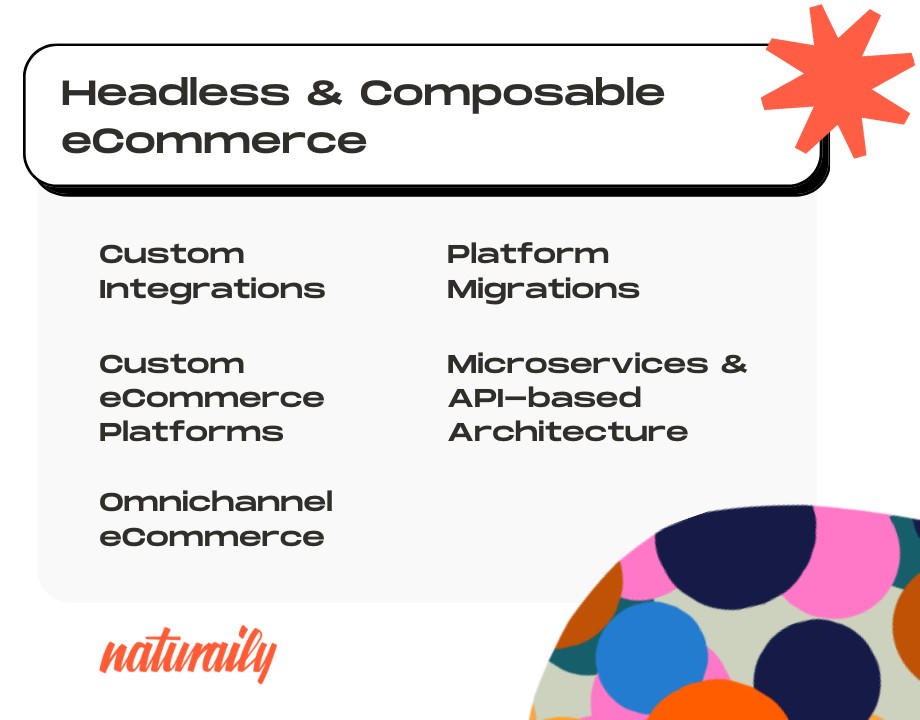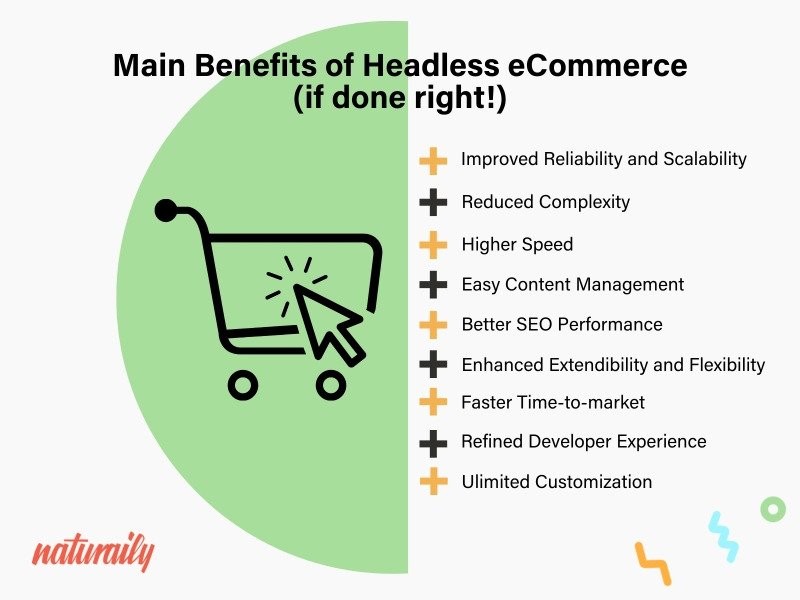In today's fast-paced digital era, businesses are relentlessly searching for agile solutions that ensure adaptability, scalability, and a definitive competitive edge. Headless commerce is emerging as that game-changing strategy for forward-thinking enterprises globally. No wonder!

What is Headless Commerce?
In headless architecture, the frontend (what users see and interact with) is decoupled from the backend (where data resides and operations occur). This approach can be successfully adopted in the e-commerce realm, driving more efficiency and flexibility because both layers can be developed independently. Just think of it as a store where the display windows can adapt instantly without restructuring the entire building.
Why Go Headless?
According to the 2022 State of Commerce report by Salesforce, a staggering 80% of businesses yet to adopt headless are planning to do so within the next 2 years. Reasons? The manifold benefits of headless commerce.
Main Headless Benefits
- Unparalleled Flexibility & Speed: Businesses can promptly adapt to market shifts. Launching a new promotional campaign or refreshing your online store’s design becomes a breeze.
- Streamlined Integrations: Integrating with various technologies, apps, or platforms is seamless. A consistent experience for both customers and back-end users is there.
- Robust Performance & Scalability: Faster website loading times, improved user experience and SEO. As your business grows, the system can scale without hitches.
- Enhanced Personalization: Tailoring customer experiences becomes simpler. Serve content, products, or promotions based on user preferences and behaviors.
Potential Use Cases
Headless architecture provides a flexibility that can be valuable to basically any e-commerce business.
- Omni-channel: Businesses that operate across multiple channels require broad adaptability. Each channel can have its unique front-end presentation while pulling from the same back-end data.
- Global Businesses: For companies that serve multiple countries or regions, each with its own language, culture, and currency, headless makes it easier to customize.
- D2C Brands: Headless allows to design distinct, brand-centric front-end experiences without being constrained by traditional platforms.
- B2B E-commerce: B2B selling often requires intricate purchasing workflows, approval processes, and pricing models. Headless allows for a flexible frontend to meet these unique requirements while integrating seamlessly with ERP systems and other backend tools.
- Marketplaces: The modular approach of headless can support diverse storefronts and varied user experiences for each vendor while maintaining a centralized management system.
- Personalization-centric: Highly personalized shopping experience – based on user behavior, preferences, location, or device – is easily possible due to freedom on the frontend.
- Innovative Startups: Ventures looking to differentiate themselves with unique UI/UX designs or novel business models can tap into the flexibility of headless to test, iterate, and implement their visions.

Given the direction in which market trends are leaning, headless might very soon become the gold standard in e-commerce. Consider this: a report by Elastic Path revealed that 82% of businesses that embraced a headless commerce anticipate a lower TCO over the next 3 years.
We’re Naturaily – a Jamstack and headless commerce development company with over 10 years of experience. If you’re interested in leveraging headless potential for your business, simply drop us a line: hello@naturaily.com